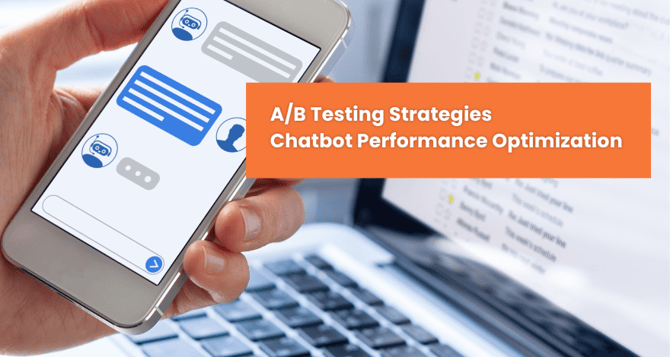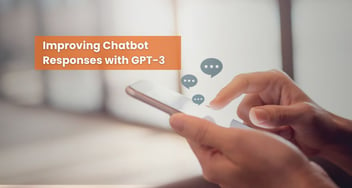A/B Testing Strategies for Chatbot Performance Optimization
Explore effective A/B testing strategies for optimizing chatbot performance. Learn techniques to enhance user interactions and fine-tune your chatbot for optimal effectiveness through experimentation and analysis.

In the ever-evolving world of artificial intelligence and chatbots, optimizing performance is essential to ensure a seamless and engaging user experience. One of the most effective methods for achieving this is through A/B testing. In this article, we will explore the A/B testing strategies used to fine-tune chatbot performance, complete with technical implementations and real-world examples.
Understanding A/B Testing
A/B testing, also known as split testing, is a method of comparing two or more versions of a web or mobile application to determine which one performs better. This iterative process allows developers to make data-driven decisions to improve user engagement and conversion rates. When applied to chatbots, A/B testing can help fine-tune various aspects of their performance.
Key Elements of A/B Testing for Chatbots
1. Hypothesis:
Start with a clear hypothesis. Identify what you want to improve in your chatbot, whether it's user engagement, conversion rates, or user satisfaction.
2. Variations:
Create multiple versions of your chatbot with the specific changes you want to test. These variations will be referred to as the A (control) and B (variant) groups.
3. Random Assignment:
Randomly assign users to either the A or B group. This helps ensure that the results are not biased by the selection of users.
4. Data Collection:
Collect data on user interactions with both versions of the chatbot. Metrics can include completion rates, response times, user feedback, and more.
5. Statistical Analysis:
Use statistical methods to analyze the data and determine whether there is a significant difference in performance between the two versions.
6. Implementation:
If the variant (B) outperforms the control (A), implement the changes permanently. If not, consider further refinements or alternative strategies.
A/B Testing Strategies for Chatbot Optimization
1. Conversational Flow:
A key element of chatbot optimization is fine-tuning the conversational flow. A/B test different dialogue paths, including the order of questions, response length, and the tone of the conversation. For example, a travel booking chatbot could test whether users prefer to be asked about their destination or travel dates first.
2. User Interface:
Test the visual and interactive elements of your chatbot. This can include the placement of buttons, the use of rich media (images, videos), and the design of the chat interface. An e-commerce chatbot might test whether a carousel of product images improves user engagement.
3. Personalization:
Implement personalization techniques and A/B test them to see how they affect user engagement. Personalization can include addressing the user by name, recommending products based on past behavior, or providing tailored content.
4. Response Time:
A/B test the chatbot's response time. Users often prefer quick and concise responses. For instance, a customer support chatbot might test different response times to determine the optimal balance between speed and accuracy.
5. Language and Tone:
Experiment with the language and tone used by the chatbot. A/B testing can help identify whether users respond better to a formal or casual tone, and which specific words or phrases elicit better engagement.
Technical Implementations and Examples
1. Dialogflow for Flow Testing:
Google's Dialogflow offers a platform for building and A/B testing chatbot conversation flows. Developers can create multiple variations of a conversation and measure user engagement, completion rates, and user satisfaction. For instance, a banking chatbot could A/B test different ways of guiding users through the process of transferring funds.
2. AWS Lex for Response Time Testing:
Amazon Lex provides tools for measuring chatbot response times. By collecting data on the time it takes the chatbot to process and respond to user queries, developers can optimize response times to enhance user satisfaction. For example, a food delivery chatbot could test the response time for order confirmations.
3. Rasa for Language and Tone Testing:
The Rasa framework allows developers to build custom chatbots and A/B test language and tone variations. A language learning chatbot, for instance, might test whether a more encouraging tone or a more challenging one leads to better engagement with users.
4. Chatfuel for Personalization Testing:
Chatfuel, a chatbot-building platform, provides features for personalization, such as user profiles and user attribute tracking. A travel recommendations chatbot could A/B test the impact of personalized hotel recommendations based on users' past preferences.
Conclusion
A/B testing is a powerful tool for optimizing chatbot performance, leading to more engaging and satisfying user interactions. By carefully formulating hypotheses, creating variations, and analyzing user data, developers can continuously fine-tune chatbot conversational flows, UI elements, personalization, response times, and language to better meet user needs.
Smart Solutions, Smarter Business!
Our team is dedicated to building cutting-edge generative AI solutions that cater to your unique business requirements.
As chatbots continue to play a prominent role in customer service, e-commerce, education, and various other industries, A/B testing is a vital practice for ensuring that these AI-driven interfaces are as effective and user-friendly as possible. Data-driven insights derived from A/B testing enable chatbots to adapt and evolve, ultimately enhancing the user experience and driving better results.













